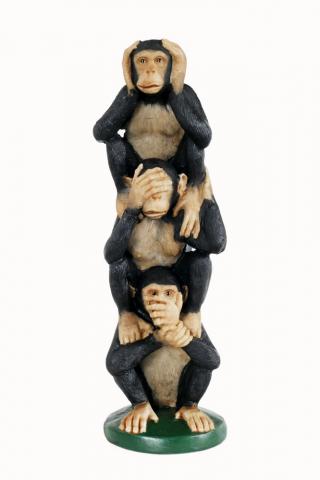George Mason University (GMU) has labored for 2 years on simple plagiarism complaints. It has just written self-contradictory findings that avoided seeing plagiarism in the 2006 Wegman Report (WR) while admitting the same text elsewhere was plagiarism.
In March 2010, climate scientist Ray Bradley complained to GMU of 2.5 pages of plagiarism of his paleoclimatology book by the Wegman Report. In May he added 5.5 pages of WR Social Networks Analysis plagiarism and a 1.5 -page subset in a Computational Statistics and Data Analysis (CSDA) paper.
All were based on the work of Canadian blogger Deep Climate, who kept finding more problems. The known total of 80+ pages has 4 PhD dissertations, some lectures, a patent and 7 papers.
Edward Wegman and Yasmin Said published two largely-plagiarized papers in a “peer-reviewed” Wiley journal they edit with David Scott. Wikipedia pages they copied were better.
In May 2011, CSDA publisher Elsevier finally forced retraction of the CSDA paper.
Late last month, GMU Provost Stearns wrote that there was no plagiarism in the Wegman Report, in a letter sent to faculty, but not Bradley. The already-retracted CSDA paper was ruled plagiarism, but Wegman’s actions were labeled as “bad judgment” in “contextual sections.”
The 5.5-page WR text was innocent and its 1.5-page CSDA subset guilty. “That doesn’t even make good nonsense.”
Wegman was ordered to apologize to CSDA and retract the already-retracted paper. A reprimand would be placed in his file. Bradley had patiently endured 6 months of misleading nonsense. He spoke only when asked directly by USA Today‘s Dan Vergano, but Stearns complained about Bradley.
The public expects academe to seek truth and punish academic misconduct, key elements of academe’s bargain with the public. Public trust is especially crucial for schools that receive Federal funding, such as GMU‘s $85M in 2010.
GMU‘s behavior seems astonishingly far outside academic norms and perhaps Federal guidelines.
Why did it take 2 years to evaluate 9.5 pages of plagiarism that experts thought obvious?
Might it be relationships with GMU Law School grads like Virginia Attorney General Ken Cuccinelli or his former law partner, Milton Johns, who happens to be Wegman and Said’s lawyer? Or might it be tight relationships with the same people who have long funded fake science from think tanks? As Yoda might have said “The Koch is strong in this one.”
According to USA Today, “Stearns says the university is not investigating any other complaints.”
If true, not only did GMU violate its own policies on duration, but on process, because they have ignored numerous well-documented complaints, including about 4 papers with Federal funding. This process involved VP Research Roger Stough, Provost Peter Stearns and President Alan Merten, so it was certainly visible inside GMU.
See No Evil,
Hear No Evil
Speak No Evil … except about Ray Bradley, who has yet to receive any report.
The attached report enumerates the problems that GMU managed not to see, shows the chronology of a simple complaint that took almost 2X longer than specified by policy and finally produced an obvious contradiction. People may find GMU‘s funding and connections interesting, inlcuding similarities and relationships with Heartland Institute. Finally, readers might recall the WR was alleged to be an attempt to mislead Congress, so this is not just an academic issue.
UPDATE 03/1612: Wegman and Said had wriitten 2 mostly-plagiarized articles for the Wiley WIREs:CS journal, which they co-edit with David Scott. The problems were reported to Wiley last Spring, as covered in section 5.2. Deep Climate describes their solution: quietly revise the articles so the plagiarism never happened. A short section 5.3 has been added for this.
UPDATE 06/21/12: Fixed typos and broken URLs and added an 8-page extract of the Wiley-specific sections.
UPDATE 08/20/12: Major revision to include results from FOIAs, see See No Evil, Speak Little Truth, Break Rules, Blame Others
Image credit: Joy Brown / Shutterstock
Subscribe to our newsletter
Stay up to date with DeSmog news and alerts






